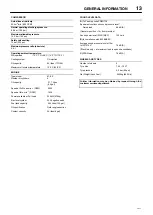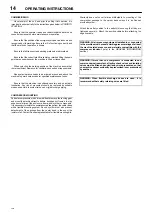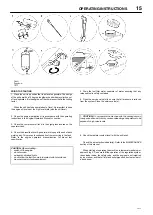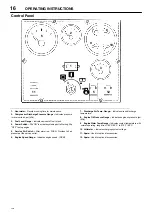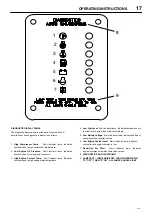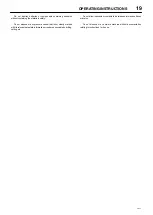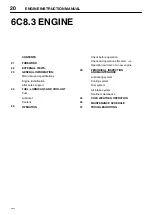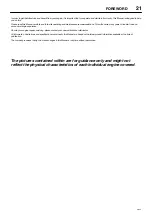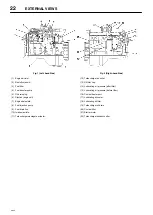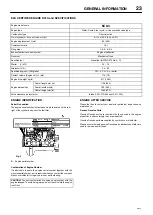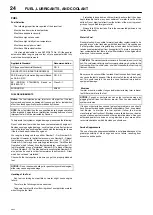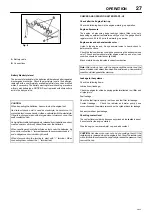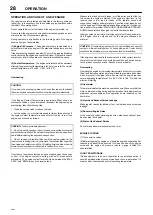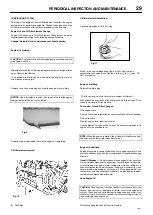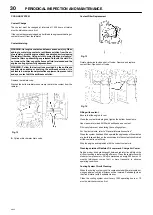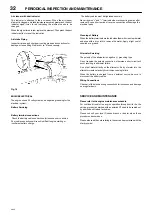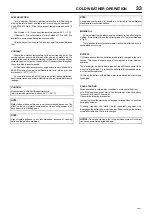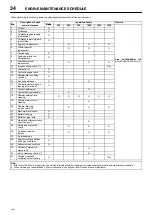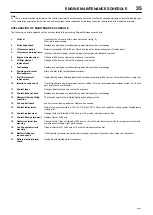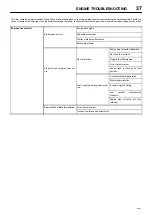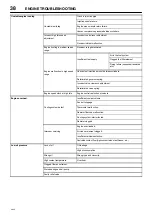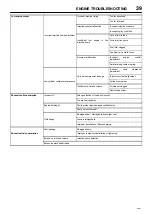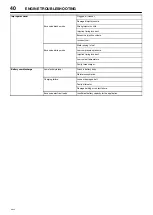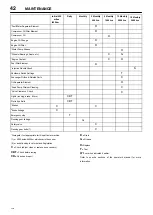
27
OPERATION
9/235
Fig.
8
A
Battery cable
B
Connections
Battery Electrolyte level
The amount of electrolyte in the batteries will be reduced after repeated
discharge and recharge. Check the electrolyte level in the batteries,
replenish with a commercially available electrolyte such as distilled
water, if necessary. The battery electrolyte level checking procedure
will vary with battery type. NOTICE: Do not replenish with dilute sulfuric
acid in the daily service.
CAUTION:
When inspecting the batteries, be sure to stop the engine first.
As dilute sulphuric acid is used as electrolyte, be careful not to
contaminate your eyes, hands, clothes, and metals with the electrolyte.
If it gets in your eye, wash with a large amount of water at once, then
seek medical advice.
As highly flammable hydrogen gas is released from the batteries, do not
create a spark or allow any naked flame near the batteries.
When handling such metallic articles as tools near the batteries, be
sure not to contact the “+” terminal because the compressor body is “
−
”
and a dangerous short circuit might result.
When disconnecting the terminals, start with “
−
” terminal. When
connecting them, connect the “
−
” terminal last.
CHECKS AND OPERATION AFTER START
−
UP
Check after the Engine Start
−
up
Check the following items in the engine warming
−
up operation.
Engine oil pressure
−
The engine oil pressure gauge readings (where fitted) may vary
depending on ambient temperature and type of oil. The gauge should
register around 55 to 85 psi in the warming
−
up period.
Engine noise and exhaust smoke color
−
Listen to the engine and, if any abnormal noise is heard, check to
determine the cause.
Check the fuel combustion condition by observing the exhaust smoke
color. The exhaust smoke color after engine warm
−
up and at no
−
load
condition should be colorless or light blue.
Black or white smoke indicates incorrect combustion.
Note:
After start
−
up from cold the engine might be noisier and the
exhaust smoke color darker than when it has warmed up. However this
condition will disappear after warm up.
Leakage in the systems
−
Check the following items:
Lubrication oil leakage
−
Check the engine for oil leaks, paying particular attention to oil filter and
oil pipe joints.
Fuel leakage
−
Check the fuel injection pump, fuel lines and fuel filter for leakage.
Coolant leakage
−
Check the radiator and water pump hose
connections and the water drain cock on the cylinder block for leakage.
Exhaust smoke or gas leakage
Checking coolant level
The coolant level could drop because any mixed air is expelled in about
5 minutes after the engine started.
Stop the engine, remove radiator cap, and add coolant.
CAUTION:
Hot steam can rush out and you could get burnt if the
radiator cap is removed when the engine is hot. Cover the radiator cap
with a thick cloth and loosen the cap slowly to reduce the pressure, then
remove the cap.

